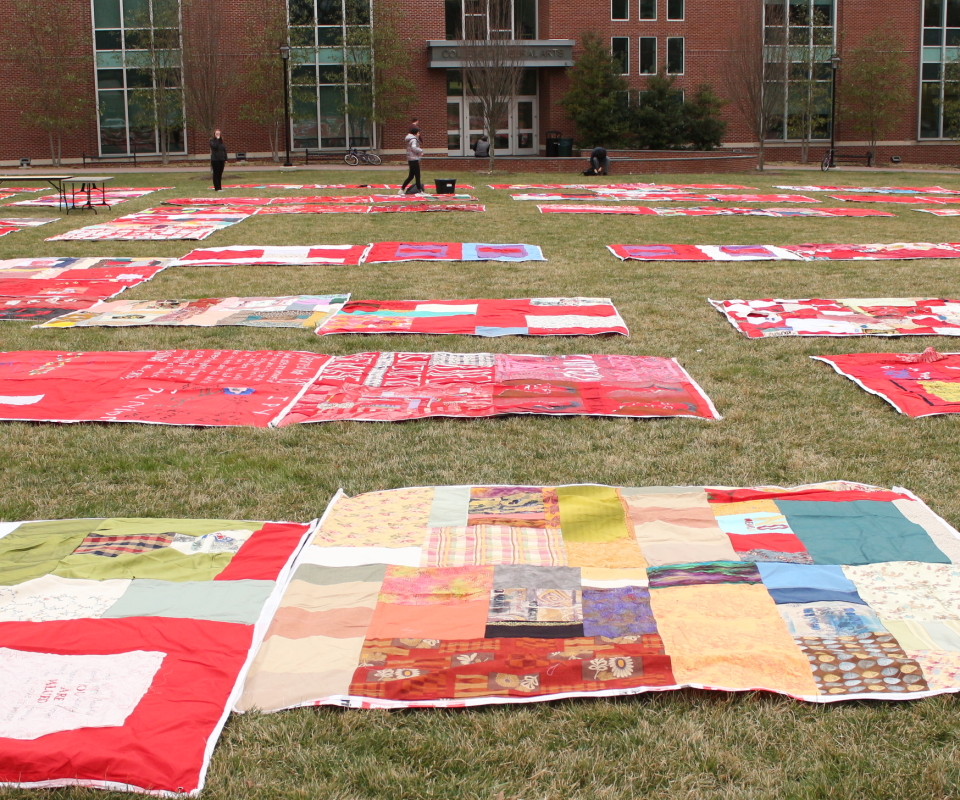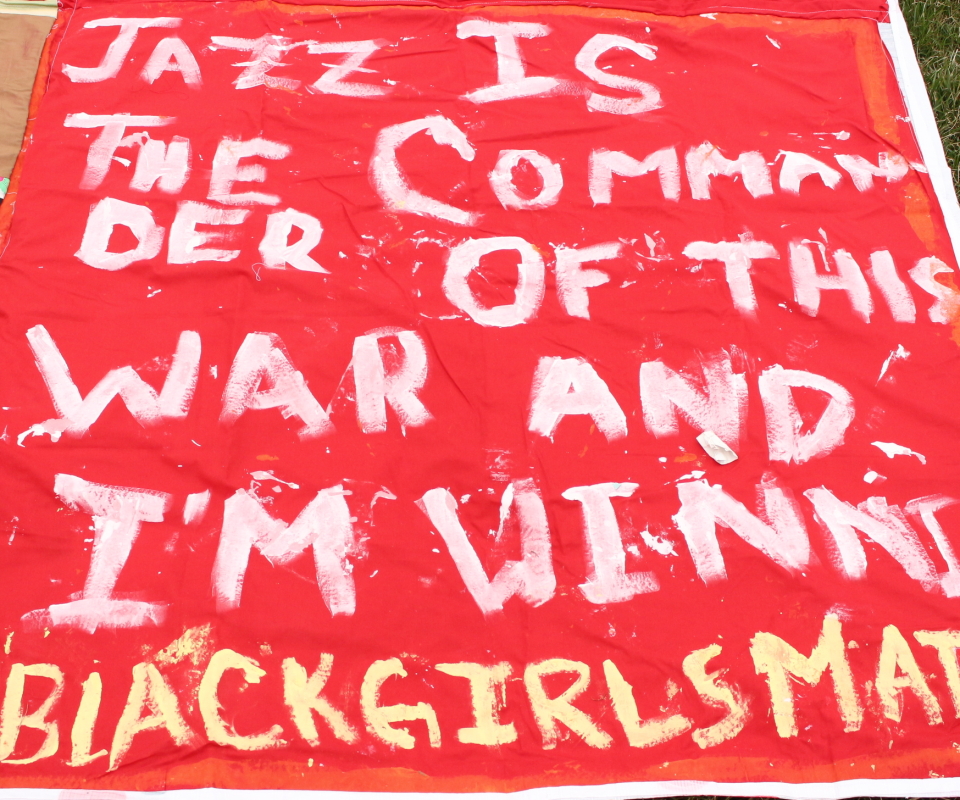
Wondering about that giant quilt by the CLA?
By: Kristin Helf, Associate Arts & Life Editor
The lawn outside the Liberal Arts Building became a safe space for survivors of sexual violence — all because of a quilt.
Baltimore-based activist group FORCE first displayed the Monument Quilt at Towson two years ago, and the organization returned this year, on March 30, with an even larger quilt, arranged on the lawn to spell out “We Are Not Alone.”
Rebecca Nagle, a co-founder and co-director at FORCE, has worked with her team to collect over 1,000 quilt squares made by survivors and allies since the quilt’s launch in 2013.
“Survivors, secondary survivors and loved ones are invited to make a quilt square, which can be a story or a message about sexual assault and domestic violence, or messages of support for survivors,” Nagle said. “And that can be in phrases. Sometimes people write their entire story. Sometimes it’s abstract, and it’s just a picture. It’s really up to how the person who’s making the quilt square wants to express themselves.”
The amalgamation of squares, each one completely different from the next, represents the uniqueness of each individual who had a part in creating the quilt. However, although each square is unique, they work together to create one unified installation that aims to support and encourage survivors all over the country.
“It’s based on stories, it’s not just statistics,” Monument Quilt intern Simona Stankeviciute said. “It’s more personal and everyone that comes by and does a quilt is in a safe environment, to feel however they need to in order to express their stories.”
Although the quilt has been displayed in 22 cities across the U.S., Nagle noted how important it is to bring such an installation to college campuses.
“We know that sexual assault is a huge issue on college campuses right now, so part of what the quilt does is, instead of making it a private issue or an issue that survivors on their own need to carry, it’s creating space where communities come together to support survivors,” Nagle said.
And while most campuses offer support to survivors of sexual assault through counseling, the Monument Quilt exists to publicly acknowledge that sexual violence affects everyone differently.
“Having this on the lawn here at Towson sends a message to all the survivors who are in Towson University that today, here, this is a space where their experience is publicly affirmed,” Nagle said. “A lot of times as survivors, we might get that in a private space, we might get that in a counseling setting or a support group, but it’s very rare that we have public spaces where people acknowledge and support our experiences.”
While the weather conditions during the Thursday display weren’t optimal — the installation had initially been planned for Thursday and Friday, but Friday was cancelled due to rain — students and faculty came from all over campus to find out what, exactly, was blanketing the CLA lawn on Thursday afternoon.
Shanti Flagg, who works as the Monument Quilt’s studio manager at their Baltimore headquarters, acknowledged the different reactions she’s seen as people approach the quilt for the first time.
“With every display, there’s some people who interact with it and walk away and have emotions about it sometime later, and there’s some people who have an immediate emotional response,” she said.
FORCE is currently planning a culminating Monument Quilt display that will be installed on the White House lawn in D.C. Because they hope to feature 6,000 squares in the final display, Flagg urges anyone interested in getting involved with the quilt to volunteer at the studio.
“You can imagine it’s a lot of sewing,” she said.
But, she acknowledges, the hours of volunteer work, whether at the studio or outside during a display, tend to be worth it in the end.
“Last year we did a display in Baltimore, so a lot of people who made quilt squares were able to attend the display, and I helped a couple people find squares that they made,” Flagg said. “And that was a really impactful experience because I could see the ways in which the quilt materially helps people.”


















